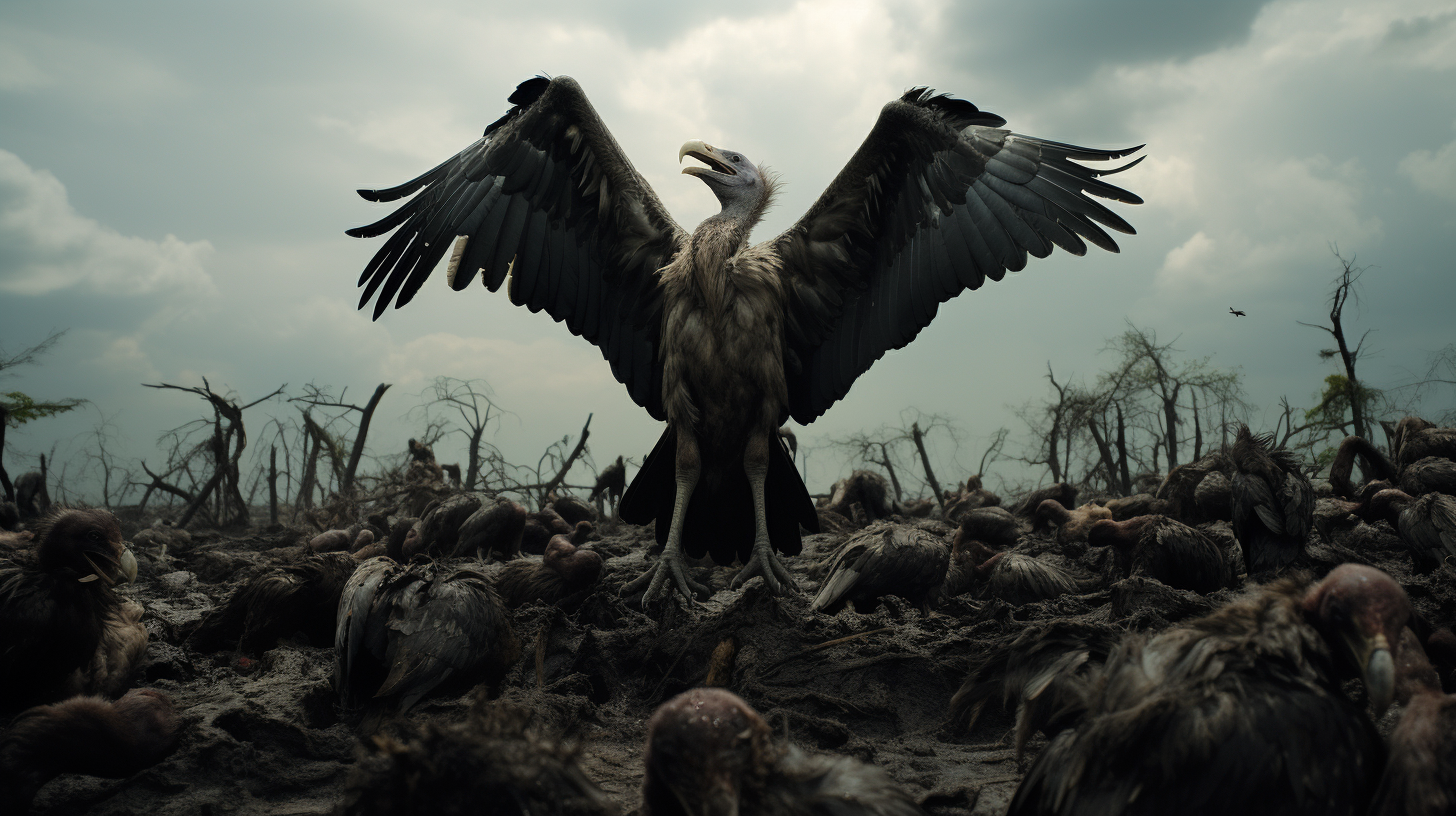The once-vibrant canvas of our ecosystem is fading, its hues of green and blue growing desolate and thin. The gentle murmur of life has turned into a somber silence, punctuated only by the gusting winds carrying the mournful circles of vultures overhead. In a world where the equilibrium of life teeters precariously, the sky tells a tale of devastation. Today’s dispatch takes us to the scorched savannas, where the vultures’ ominous ballet in the skies serves as a stark testament to the collapse of a once thriving ecosystem.
These masters of the air, with their vast wingspan and sharp eyes, have become the harbingers of death in a land where the cacophony of life has been reduced to a whispered echo. Every tilt of their wings reflects the dire state of our world—a starving environment where not even the scavengers can escape the relentless grip of hunger.
The scene is a macabre mirror of an age-old cycle, where death begets life, and life heralds death. Beneath the circling vultures, the carcasses of animals lay strewn, their lifeless forms providing scant nourishment to the increasingly desperate cleaners of nature. The steady decline of prey species—a consequence of habitat loss, climate extremes, and human encroachment—has turned the vultures’ role from ecological custodians into a grim waiting game for the next inevitable casualty.
Environmental researchers are alarmed by the rapid changes, noting that this isn’t just a shift but a potential collapse. Dr. Elizabeth Kairo, a leading ecologist, speaks with a weighted gravity, “In a natural system, creatures like vultures play a critical role in preventing disease and recycling nutrients. Their plight is not just their own—it’s indicative of a much broader crisis.” The signs are everywhere, from the drastic shifts in migratory patterns to the uncanny silence that has replaced the once rich tapestry of wildlife calls at dusk.
To understand the full scope of this calamity, one must consider how interconnected our ecosystem’s threads truly are. Consider the example of the aforementioned urban bees from our previous exploration: while their populations find a peculiar refuge amid concrete and steel, they are a stark reminder of the many beings that fail to adapt, that find themselves without a sanctuary in the face of relentless environmental degradation.
Amid this grim reality, however, vultures showcase a resilience that is both admirable and heart-wrenching. With their numbers dwindling, they move further afield, their soaring trajectories crossing over the territories they once ignored in search of sustenance. It is the adaptability and perseverance of nature—even in its last gasps—that holds a dark fascination for us, the distant, often indifferent observers.
‘Vultures Overhead’ is not just a phenomenon; it’s a metaphor for the decline we witness across the globe. From the barren lands to our own backyards, the signs are there, if we dare to raise our gaze. There is an urgent poetry in the vultures’ flight, a call to action written on the winds of an ailing world.
Yet, in the distance, the unyielding throb of human activity continues. Our incessant march towards industrial and technological progress seems indifferent to the delicate balance of nature that once commanded respect. We must ask ourselves: At what cost does humanity advance? In the silent cadence of vultures in flight, there lies an answer—a foreboding message about the price of neglecting the sanctuary that sustains us all.
This dance of death in the skies, a once rare and natural phenomenon, has become a pervasive element of our daily reality, signaling a need for introspection and action. As the vultures cruise on languid thermals, drifting ever so gracefully yet with a heavy burden, we must confront the reality of their message and the choices that lie before us—less we, too, become subjects beneath their disconcerting vigil.
